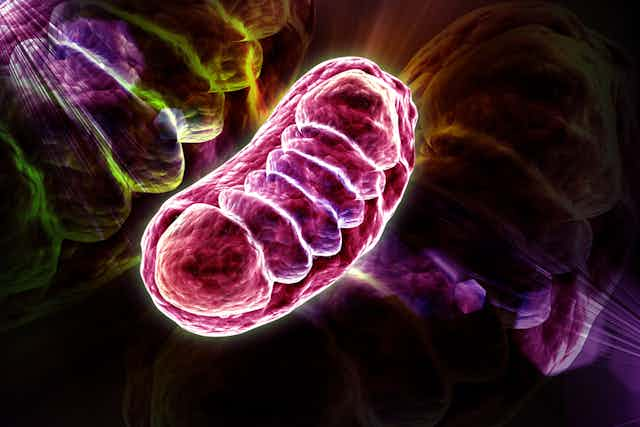Applications Of Nanochondrion In Biomedical Engineering
Nanochondrion and Cancer Detection
Cancer is one of the leading causes of death worldwide, with millions of people being diagnosed with the disease every year. Early detection of cancer is critical for effective treatment, as it improves the chances of cancer remission and survival rates. Various medical imaging techniques are used to diagnose cancer, such as MRI, CT scan, etc. However, these methods have certain limitations, including high costs, time constraints, and accuracy. That's where Nanochondrion can provide an effective and efficient solution for cancer detection.
Nanochondrion is a nanoscale device that combines the benefits of conventional medical diagnostics and nanotechnology. It is a biosensor that can detect biomolecules present in the human body, such as proteins, DNA, and RNA, with extremely high precision. Nanochondrion works by binding to specific biomolecules present in cancer cells and generates electrical or optical signals that can be detected by the user. These signals can then be converted into a digital format and analyzed using advanced algorithms to determine the presence and type of cancer.
The advantages of Nanochondrion for cancer detection are immense. First, it is highly sensitive and specific, which means it can detect cancer at an early stage accurately. Second, it is cost-effective and easy to use, making it accessible to people from all socio-economic backgrounds. Third, it has a quick turnaround time, as it can provide results within minutes, unlike traditional medical diagnostics that can take hours or days. Finally, it is a non-invasive technique, which means it does not require surgery or biopsy for cancer detection, thus reducing the risk of complications.
Nanochondrion has various applications in cancer detection, including breast cancer, lung cancer, prostate cancer, etc. For instance, Nanochondrion can be used to detect prostate-specific antigen (PSA) in patients with prostate cancer, which is currently done using blood tests. Similarly, Nanochondrion can detect breast cancer biomarkers, such as human epidermal growth factor receptor 2 (HER2), which can diagnose breast cancer with high accuracy.
Nanochondrion-Based Drug Delivery Systems
Apart from cancer detection, Nanochondrion has another potential application in biomedical engineering, which is the development of Nanochondrion-based drug delivery systems. Nanoparticles have unique properties, such as high surface area, high reactivity, and high stability, that make them ideal candidates for carrying and delivering therapeutic agents to specific target sites in the body.
Nanochondrion-based drug delivery systems can deliver therapeutic agents to cancer cells, increasing the efficacy of treatment while minimizing toxicity to healthy cells. Moreover, Nanochondrion-based drug delivery systems can overcome some of the challenges associated with conventional drug administration methods, such as poor solubility and bioavailability.
Nanochondrion-based drug delivery systems have the potential to not only improve cancer treatment outcomes but also treat a range of other diseases, such as neurological disorders, infectious diseases, and cardiovascular diseases. For instance, Nanochondrion-based drug delivery systems can deliver drugs across the blood-brain barrier to treat neurological disorders or deliver vaccines to target infectious diseases.
Nanochondrion in Neurodegenerative Disease Diagnosis
Another exciting potential application of Nanochondrion in biomedical engineering is the diagnosis of neurodegenerative diseases. Neurodegenerative diseases, such as Alzheimer's disease and Parkinson's disease, affect millions of people worldwide, and early diagnosis is vital for effective management and treatment.
Nanochondrion can detect biomarkers associated with neurodegenerative diseases in the cerebrospinal fluid, blood, or urine with high sensitivity and specificity. These biomarkers include amyloid-beta and tau proteins in Alzheimer's disease, alpha-synuclein in Parkinson's disease, and prions in Creutzfeldt-Jakob disease. By detecting these biomarkers, Nanochondrion can aid in early diagnosis and monitoring of neurodegenerative diseases, leading to better treatment outcomes and improved patient care.
Nanochondrion's ability to detect neurodegenerative disease biomarkers can also facilitate drug development. Currently, there are no disease-modifying therapies for neurodegenerative diseases, and treatment is primarily symptomatic. However, with the help of Nanochondrion, researchers can identify specific biomarkers associated with neurodegenerative diseases, leading to the development of new therapies that target the underlying disease mechanisms.
Nanochondrion and Tissue Engineering
Tissue engineering is an emerging field of biomedical engineering that involves creating functional tissues to replace or repair damaged or diseased tissues. Nanotechnology has played an essential role in the development of tissue engineering, and Nanochondrion has the potential to improve this field further.
Nanochondrion can help in the development of tissue engineering scaffolds by precisely controlling the release of growth factors and therapeutic agents from the scaffold. Moreover, the biomimicry of Nanochondrion can provide a suitable cellular microenvironment that encourages cell attachment, differentiation, and growth.
Nanochondrion-based tissue engineering has the potential to revolutionize regenerative medicine by creating functional tissues, such as skin, cartilage, bone, liver, and heart tissue. For example, in skin tissue engineering, Nanochondrion can be used to deliver growth factors and cytokines to promote skin cell growth and differentiation.


No comments: